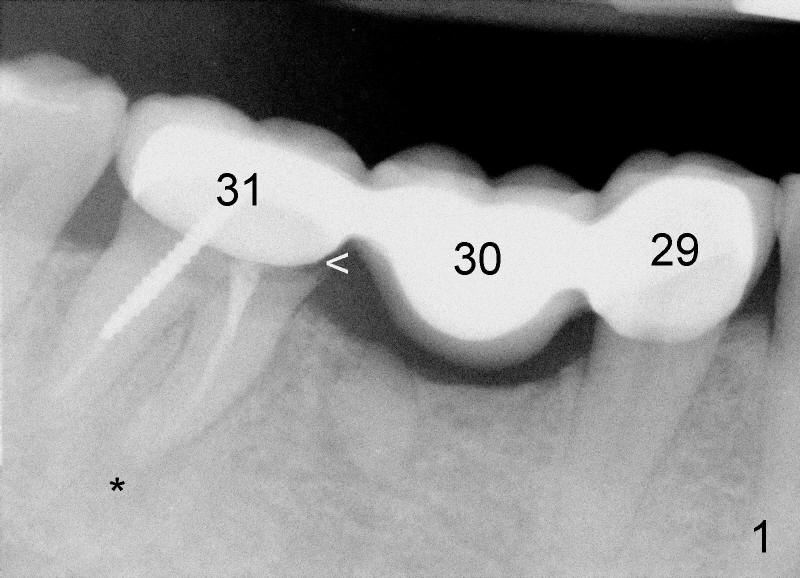
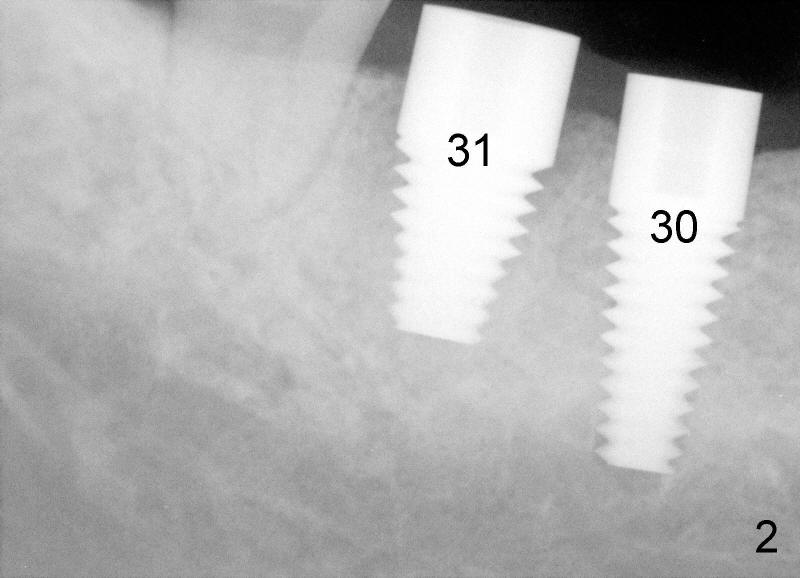
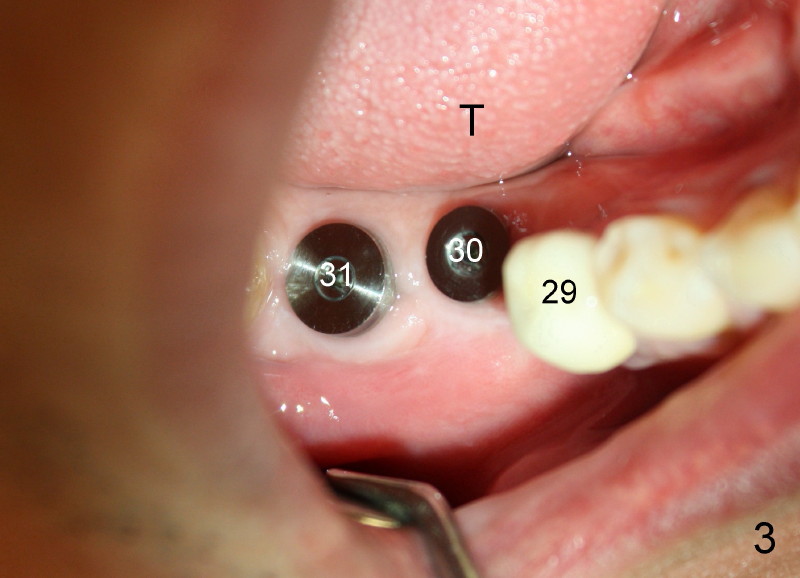
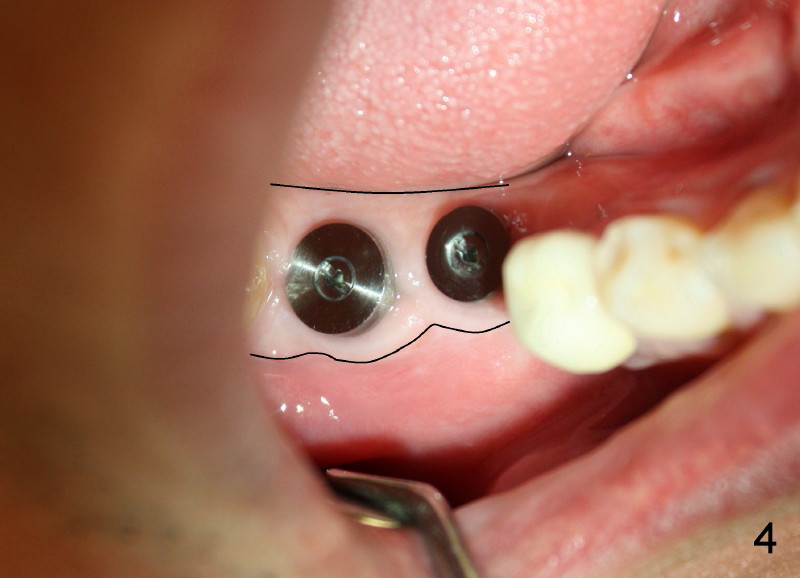
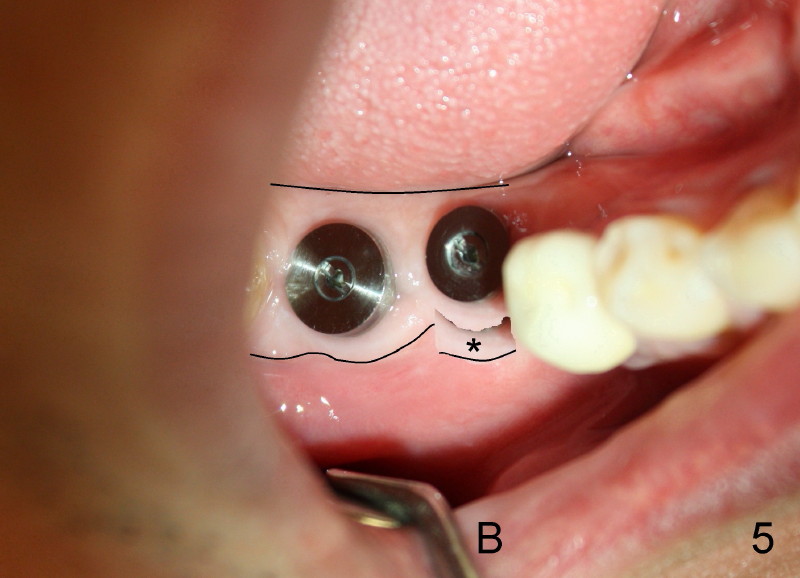
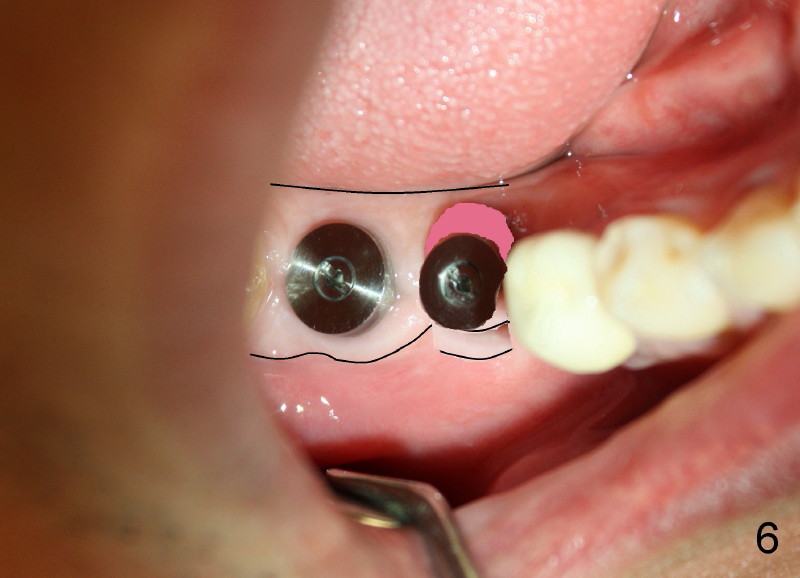
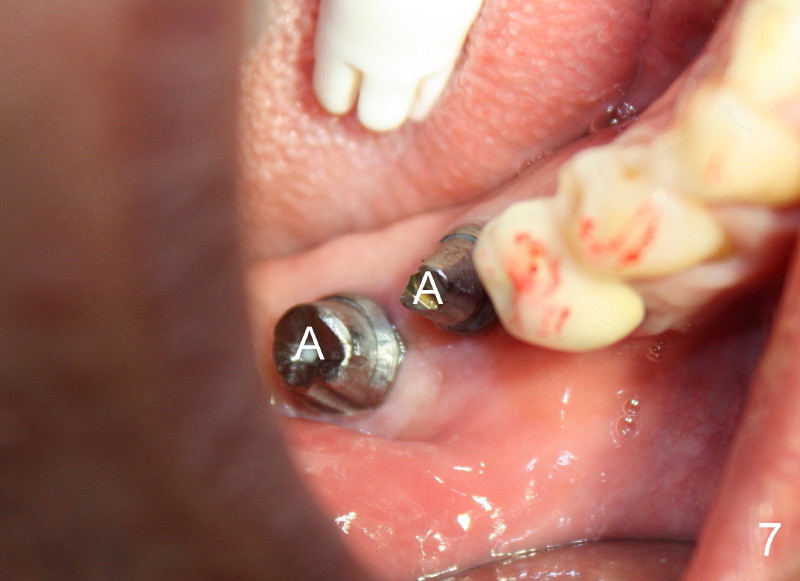
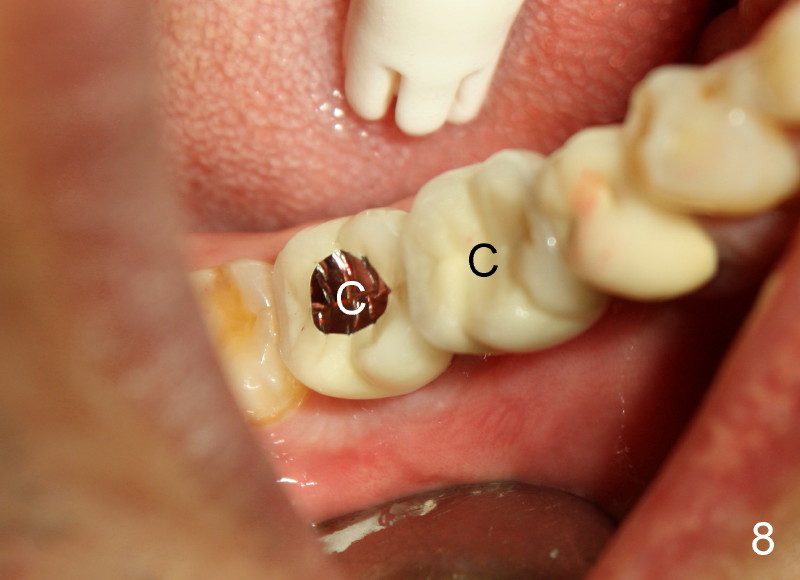
 |
 |
|
 |
 |
|
 |
 |
|
 |
 |
Why My Implants are not Straight?
Mr. Young has had a bridge (Fig.1: #29-31) to replace a missing tooth (#30) for a long time. Recently he has problems with the bridge. One of the supporting teeth (#31) has a cavity under the bridge (<) and root tip infection (*). The tooth cannot be saved. Six weeks after extraction of the tooth, two implants are placed for these two missing teeth (Fig.2: 30,31).
Everything goes on very well after surgery. In another 4 months, Mr. Young returns for crowns. He is very excited, but he has a question "why are my implants not straight?" (Fig.3). The implant at the site of #30 is closer to the tongue (T).
Fig.4 shows the outline of the bone around these two implants (black lines). You may notice that the bone around the implant of #30 is less than that of #31. Not only is the implant of #30 is smaller than that of #31, but also is forced to be placed near the tongue side. We need certain amount of bone on either side of an implant for support. As you may recall from above, the tooth of #30 has been extracted much longer than that of #31 (years vs. weeks). After extraction without implant, our jaw bone keeps shrinking over the time.
Ideally every implant should be placed in the middle of jaw bone to have better bite force distribution. The implant can be used for long time to come.
To place implant of #30 for Mr. Young ideally, we need to have bone surgery (Fig.5: *) to increase bone bulk on the cheek side (B: buccal). After bone heals, #30 implant can be placed right in the middle of jaw bone (Fig.6, as compared to Fig.3).
The take-home message is that implants should be placed as soon as possible after extraction to prevent bone shrinkage.
Finally straight and angled abutments (Fig. 7: A) are used for implants at #31 and 30, respectively, to compensate for implant misalignment. Mr. Young is pleased to see well-aligned crowns (Fig.8: C).
Xin Wei, DDS, PhD, MS 1st edition 02/02/2011, last revision 09/28/2012